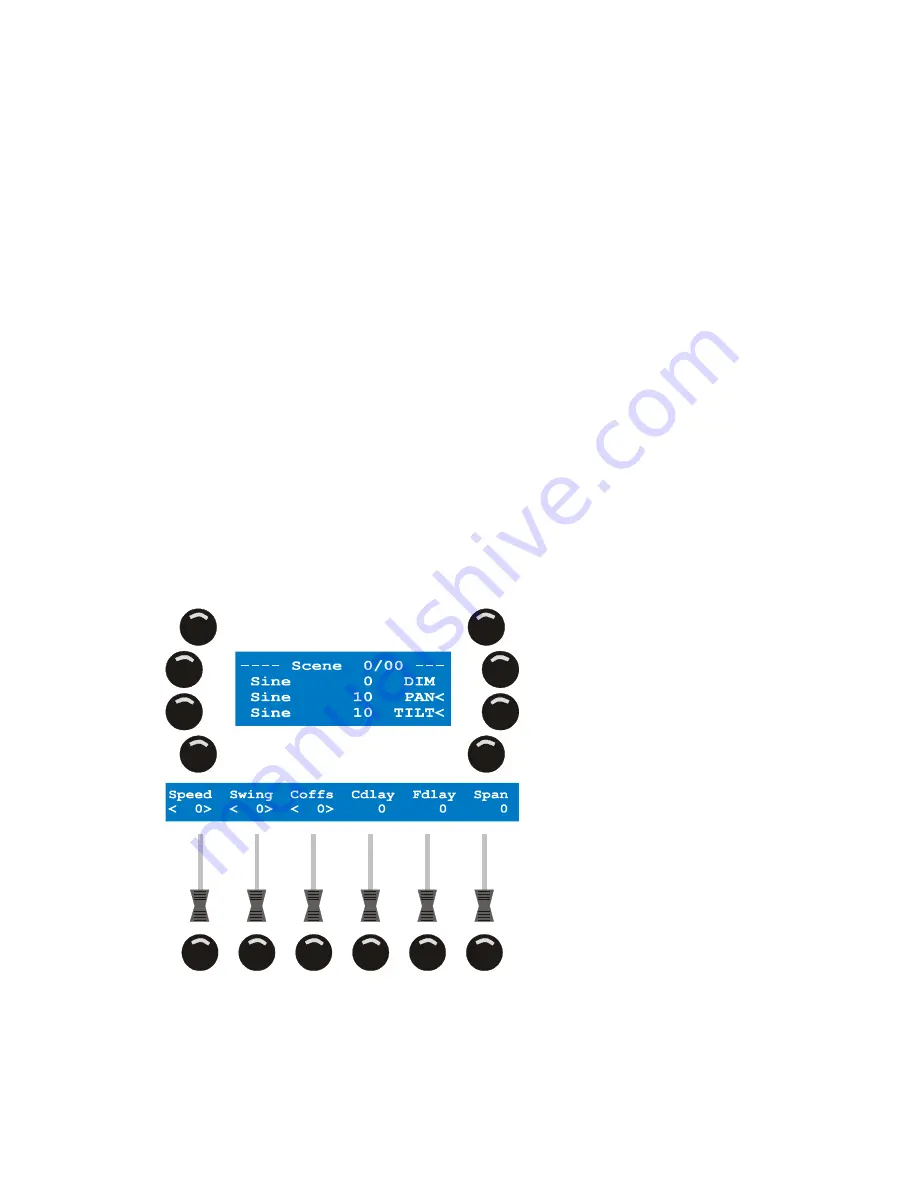
Effect generator examples
Xciter
user
manual
85
Chapter 11.
Effect generator examples
The most powerful feature of the Xciter is its effect generator. You can use up to 255 effect generators in a
scene or step. They can be applied to any control channel. In the following examples, you will see that you
can create dimmer and color chases in a single scene. Some of these chases would be almost impossible
to create with sequences. With the easy to use effect parameters, you can fully tweak the effect or make an
existing effect take on a totally different behavior. Of course you can still use sequences to do very specific
chases, like moving across tables.
11.1
How to create a circle
1.
Select at least 2 fixtures of the same type.
2.
Make sure the beams of the selected fixtures are visible.
3.
Open the dimmer (DIM) and shutter (SHUT or STROB).
4.
Activate the PAN and TILT channels and adjust them so you have a clear projection (Example: on the floor).
You will get the best results if you put all beams in one spot. We also recommend using moving mirror
fixtures instead of moving heads. Moving heads produce a figure 8 shape when they tilt past their vertical
position.
5.
Access the effects dialog from the advanced menu of the scene editor.
6.
Select the PAN and TILT channels and assign generator number 10 to them.
If you assign the same generator number to a group of channels, like PAN and TILT in this example, these
channels will have the same speed. This also means they will always run synchronized, which is needed to
maintain a circle. If you assign different generator numbers to PAN and TILT, you apply different speeds to
them. You need to do this when you want to create something like a figure ‘8’.
7.
Set the ‘Speed’ value to 20 and the ‘Swing’ value to 50. This will make the fixtures move in line.
The parameter ‘Speed’ determines the velocity of movement. If you increase the speed, the fixtures will
move faster. If you decrease it they will move more slowly.
8.
The parameter ‘Swing’ determines how far the fixtures move from one end to the other around their base
position. If you increase the swing, the fixtures will move further away from their base position. If you
decrease it, they will move closer to their base position.






























